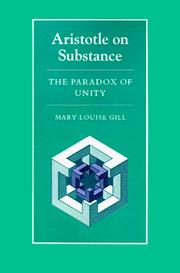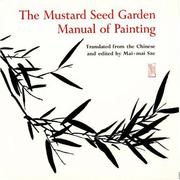| Listing 1 - 4 of 4 |
Sort by
|
Book
ISBN: 3036556443 3036556435 Year: 2022 Publisher: Basel MDPI - Multidisciplinary Digital Publishing Institute
Abstract | Keywords | Export | Availability | Bookmark
 Loading...
Loading...Choose an application
- Reference Manager
- EndNote
- RefWorks (Direct export to RefWorks)
The postharvest handling of horticultural produce is of major importance because fresh fruit and vegetables are highly perishable. It is estimated that 30% of produced horticultural commodities are lost in processes between harvest and consumption, and the reduction in these losses is currently imperative because it will impact the amount of produced food, introducing benefits on agricultural inputs, water, and land use and contributing to the sustainability of agriculture and the planet. The Special Issue “Postharvest handling of horticultural produce” collects a series of recent research papers focusing on the ripening of fruit and the senescence of harvested horticultural products, in addition to the development of environmentally friendly products and technologies that positively impact the quality and shelf life of those products, improving consumers’ preference. This Special Issue provides a valuable contribution for understanding horticultural products’ postharvest physiology and the implementation of new innovative technologies for reducing quality loss through the supply chain. In this manner, this Special Issue contributes to reductions in food loss, promoting the sustainability of agriculture.
Research & information: general --- Biology, life sciences --- quality --- vibration --- tomato --- transportation --- decay --- covering --- nonwoven --- mass loss --- metalized foam sheet --- pepper --- fruit storage-related genes --- gene expression pattern --- metabolic pathway --- molecular regulation --- Solanum lycopersicum --- antioxidants --- storage --- postharvest --- banana buds --- antibrowning techniques --- PPO --- POD --- PAL --- fresh fruit bunch --- postharvest technology --- ethephon --- retting period --- germination --- seed abnormality --- cut flower --- preservative solution --- pretreatment --- transport --- sucrose --- bruise susceptibility --- impact bruise --- mechanical injury --- kinetic model --- simulated vibration --- peach --- cold storage --- calcium nanoparticles --- antioxidant enzymes --- β-farnesene --- damage induction model --- postharvest quality --- ‘Rocha’ pear quality --- MDA --- bitter pit --- superficial scald --- chilling --- receptacle --- drupelets --- 1-methylcyclopropene --- firmness --- n/a --- 'Rocha' pear quality --- Research. --- Biology.
Book
ISBN: 0691221596 Year: 2000 Publisher: Princeton, N.J. : Princeton University Press,
Abstract | Keywords | Export | Availability | Bookmark
 Loading...
Loading...Choose an application
- Reference Manager
- EndNote
- RefWorks (Direct export to RefWorks)
Aristotle's Categories can easily seem to be a statement of a naïve, pre-philosophical ontology, centered around ordinary items. Wolfgang-Rainer Mann argues that the treatise, in fact, presents a revolutionary metaphysical picture, one Aristotle arrives at by (implicitly) criticizing Plato and Plato's strange counterparts, the "Late-Learners" of the Sophist. As Mann shows, the Categories reflects Aristotle's discovery that ordinary items are things (objects with properties). Put most starkly, Mann contends that there were no things before Aristotle. The author's argument consists of two main elements. First, a careful investigation of Plato which aims to make sense of the odd-sounding suggestion that things do not show up as things in his ontology. Secondly, an exposition of the theoretical apparatus Aristotle introduces in the Categories--an exposition which shows how Plato's and the Late-Learners' metaphysical pictures cannot help but seem inadequate in light of that apparatus. In doing so, Mann reveals that Aristotle's conception of things--now so engrained in Western thought as to seem a natural expression of common sense--was really a hard-won philosophical achievement. Clear, subtle, and rigorously argued, The Discovery of Things will reshape our understanding of some of Aristotle's--and Plato's--most basic ideas.
Categorie. --- Aristotele. Categorie. --- Abstract Nouns. --- Academy, The. --- Aspect, verbal. --- Becoming. --- Beings. --- Cave Analogy. --- Clusters. --- Common Sense. --- Count Terms. --- Divisibility. --- Dream Theory, the so-called. --- Elements. --- Entities. --- Essentialism: mereological. --- Expressions. --- Features. --- Genera. --- Heteronymy: generic notion of. --- Homonymy: Aristotle’s notion of. --- Identity (through time). --- Incompleteness. --- Ingredients: Anaxagoras’s conception of. --- Late-Learners, the. --- Linnaean Trees. --- Mass-Terms. --- Mixtures. --- Multiformity: Anaxagorean version of. --- Names. --- Natural Kinds. --- Natures. --- Non-Count Terms. --- Nonsubstance Categories. --- Objects. --- One-Over-Many Principle. --- Ordinary Language. --- Parmenides. --- Paronymy. --- Participation. --- Platonic Forms. --- Predicate Nouns. --- Qualified Things. --- Qualities. --- Receptacle, The. --- Replacement, versus Change. --- Self-Predication (SP). --- Sortal Terms. --- Stuffs and Quasi-Stuffs. --- Tests, Linguistic. --- Things. --- Uniformity: Anaxagorean version of. --- Unity: genuine. --- Whole(s).

ISBN: 0691073341 0691020701 9780691073347 Year: 1989 Publisher: Princeton (N.J.): Princeton university press
Abstract | Keywords | Export | Availability | Bookmark
 Loading...
Loading...Choose an application
- Reference Manager
- EndNote
- RefWorks (Direct export to RefWorks)
This book explores a fundamental tension in Aristotle's metaphysics: how can an entity such as a living organisma composite generated through the imposition of form on preexisting matterhave the conceptual unity that Aristotle demands of primary substances? Mary Louise Gill bases her treatment of the problem of unity, and of Aristotle's solution, on a fresh interpretation of the relation between matter and form. Challenging the traditional understanding of Aristotelian matter, she argues that material substances are subverted by matter and maintained by form that controls the matter to serve a positive end. The unity of material substances thus involves a dynamic relation between resistant materials and directive ends. Aristotle on Substance offers both a general account of matter, form, and substantial unity and a specific assessment of particular Aristotelian arguments. At every point, Gill engages Aristotle on his own philosophical ground through the detailed analysis of central, and often controversial, texts from the Metaphysics, Physics, On Generation and Corruption, De Anima, De Caelo, and the biological works. The result is a coherent, firmly grounded rethinking of Aristotle's central metaphysical concepts and of his struggle toward a fully consistent theory of material substances.
Matter --- Substance (Philosophy) --- Matière --- Substance (Philosophie) --- History --- Histoire --- Aristotle --- Contributions in matter --- Contributions in substance (Philosophy) --- Et la matière --- Et la substance (Philosophie) --- History. --- -Substance (Philosophy) --- -Matter --- Metaphysics --- Ontology --- Reality --- Atoms --- Dynamics --- Gravitation --- Physics --- -Aristotle --- -Arisṭāṭṭil --- Aristo, --- Aristote --- Aristotel --- Aristotele --- Aristoteles --- Aristóteles, --- Aristòtil --- Aristotile --- Arisṭū --- Arisṭūṭālīs --- Arisutoteresu --- Arystoteles --- Ya-li-shih-to-te --- Ya-li-ssu-to-te --- Yalishiduode --- Yalisiduode --- Ἀριστοτέλης --- Аристотел --- ארסטו --- אריםטו --- אריסטו --- אריסטוטלס --- אריסטוטלוס --- אריסטוטליס --- أرسطاطاليس --- أرسططاليس --- أرسطو --- أرسطوطالس --- أرسطوطاليس --- ابن رشد --- اريسطو --- Contributions in concept of matter --- Contributions in concept of substance --- -History --- -Contributions in concept of matter --- -Aristoteles --- Matière --- Et la matière --- Aristotle. --- Contributions in matter. --- Aristoteles. --- Arisṭāṭṭil --- Αριστοτέλης --- Pseudo Aristotele --- Pseudo-Aristotle --- アリストテレス --- Matiere --- Histoire. --- Et le concept de matiere. --- Et le concept de substance. --- Matter - History. --- Substance (Philosophy) - History. --- Albritton, R. --- Anaximander. --- Barnes, J. --- Cooper, J. --- Democritus. --- Empedocles. --- Furley, D. --- Greco, A. --- Grene, M. --- Happ, H. --- Heraclitus. --- Joachim. --- Kahn, C. --- Kostman, J. --- Lacey, A. R. --- Lennox, J. --- Loux, M. --- Mansion, A. --- Matthewson, P. --- Modrak, D. --- Owens, J. --- Parmenides. --- Prime Mover. --- Putnam, N. --- Rodier, G. --- Thales. --- Wedin, M. --- Wicksteed, P. H. --- Zabarella, I. --- aether. --- blood. --- categories: of change. --- contact. --- corpse. --- elemental transformation. --- essence. --- fetus. --- focal meaning. --- heavenly bodies. --- hylomorphic analysis. --- intellect. --- locomotion (change of place). --- organisms. --- paronymy. --- predication: accidental. --- receptacle. --- spatial. --- thisness. --- uniform materials. --- wearying.

ISBN: 0691099405 1400866839 9781400866830 0691018197 9780691018195 9780691099408 Year: 2015 Publisher: Princeton, NJ
Abstract | Keywords | Export | Availability | Bookmark
 Loading...
Loading...Choose an application
- Reference Manager
- EndNote
- RefWorks (Direct export to RefWorks)
Originally published as Volume 2 of The Tao of Painting, this is the first English translation of the famous Chinese handbook, the "Chieh Tzu Yüan Hua Chuan" (original, 1679-1701). Mai-mai Sze has translated and annotated the texts of instructions, discussions of the fundamentals of painting, notes on the preparation of colors, and chief editorial prefaces.
Painting --- Painting, Chinese --- Technique --- Painting, Chinese. --- Painters --- Chinese painting --- Paintings, Chinese --- Technique. --- S17/0600 --- China: Art and archaeology--Calligraphy and painting: general (incl. technic. and esthetic aspects) --- Painting - Technique --- A Book Of. --- Analects. --- Apricot. --- B.C. (comic strip). --- Bamboo painting. --- Bamboo shoot. --- Bamboo. --- Banksia. --- Begonia. --- Blue flower. --- Brushstrokes. --- Buddhism. --- Calligraphy. --- Camellia. --- Cedrela odorata. --- Chih. --- Chinese painting. --- Chrysanthemum. --- Cinnabar. --- Copying. --- Dyeing. --- Earthenware. --- Earwax. --- Eggplant. --- Engraving. --- Figure painting. --- Fine art. --- Firewood. --- Flowering plant. --- Flowers of the Four Seasons. --- Fungus. --- Gold leaf. --- Gourd. --- Han Yu. --- Herb. --- Herbaceous plant. --- Hydrangea. --- Illustration. --- In Parenthesis. --- Ink wash painting. --- Inkstone. --- La Vie (painting). --- Landscape painting. --- Li Tai. --- Literature. --- Lithography. --- Malachite. --- Materia medica. --- Medicinal plants. --- Monochrome painting. --- Mr. --- Mustard seed. --- Ochre. --- Oil lamp. --- Orange (colour). --- Peach. --- Peony. --- Perennial plant. --- Petal. --- Philadelphia Museum of Art. --- Picturesque. --- Pigment. --- Pink. --- Plant. --- Poaceae. --- Poetry. --- Polianthes tuberosa. --- Pomegranate. --- Porcelain. --- Prunus mume. --- Receptacle (botany). --- Saucer. --- Shan shui. --- Shrub. --- Song dynasty. --- Southern School. --- Stamen. --- Sterculia. --- Still Water (sculpture). --- Sulfur. --- Superiority (short story). --- Tang dynasty. --- Tao Te Ching. --- Tea. --- Testimonial. --- The Art of Painting. --- The Fundamentals. --- The Summer Solstice. --- Theory of painting. --- Treatise. --- Tree paint. --- Tree peony. --- Vinegar. --- Water chestnut. --- Wild plum. --- Wilting. --- Wood block. --- Writing. --- Yin and yang. --- Zhuge Liang.
| Listing 1 - 4 of 4 |
Sort by
|

 Search
Search Feedback
Feedback About UniCat
About UniCat  Help
Help News
News